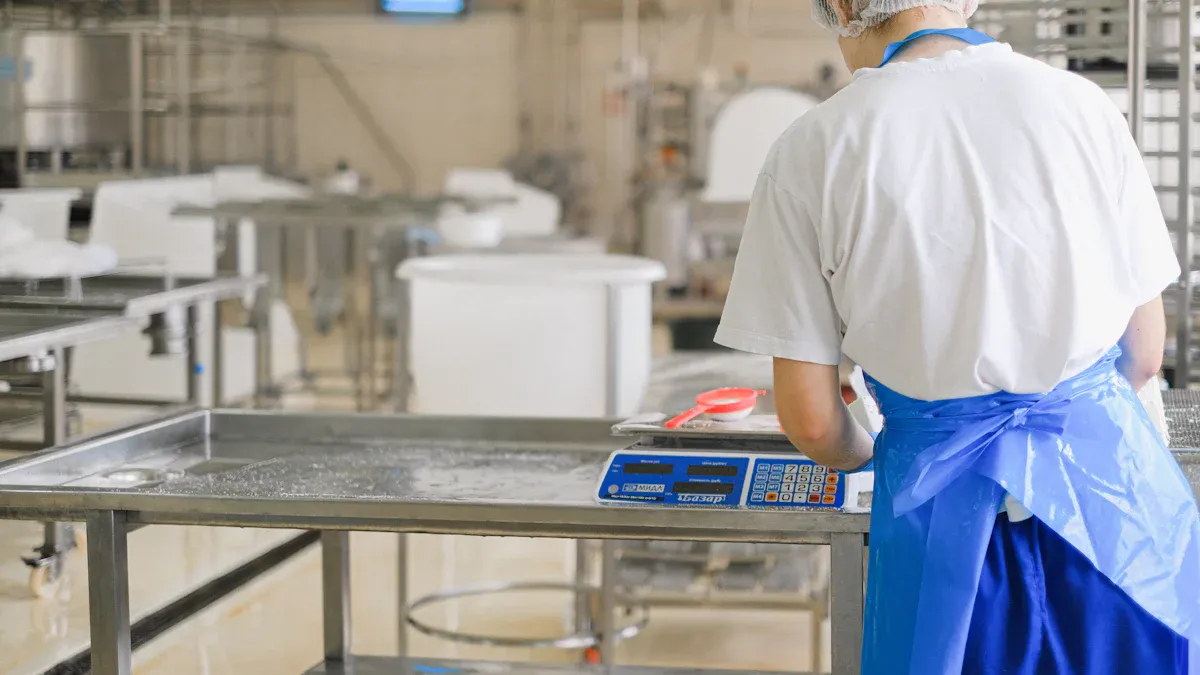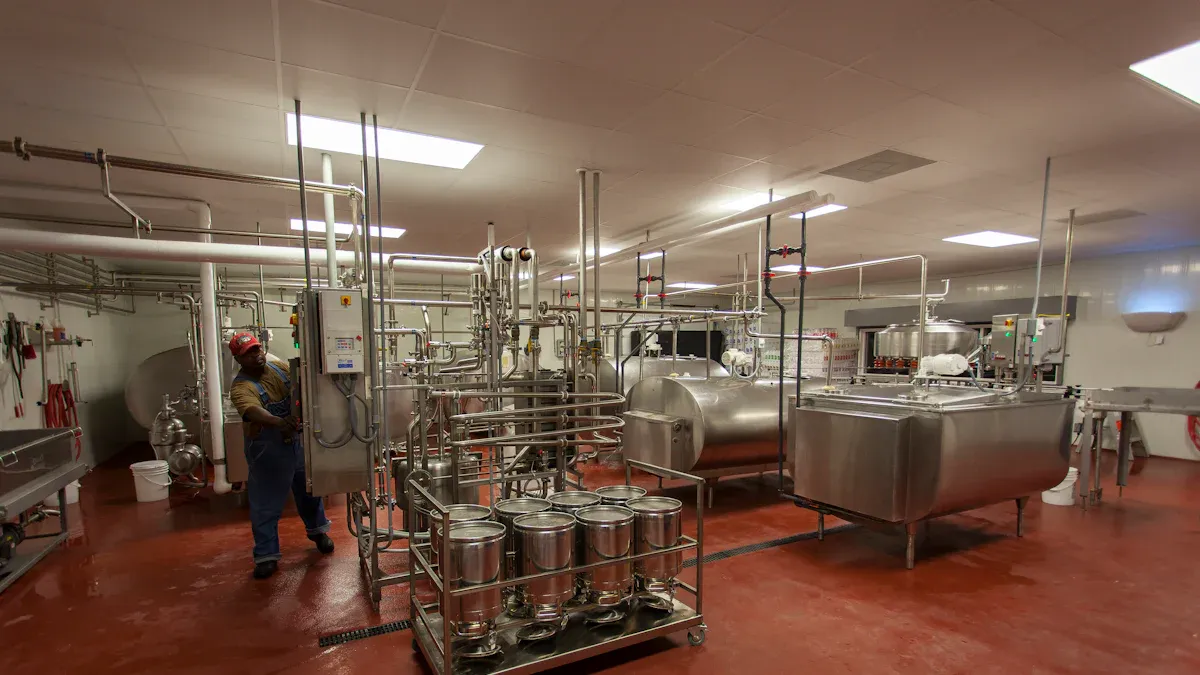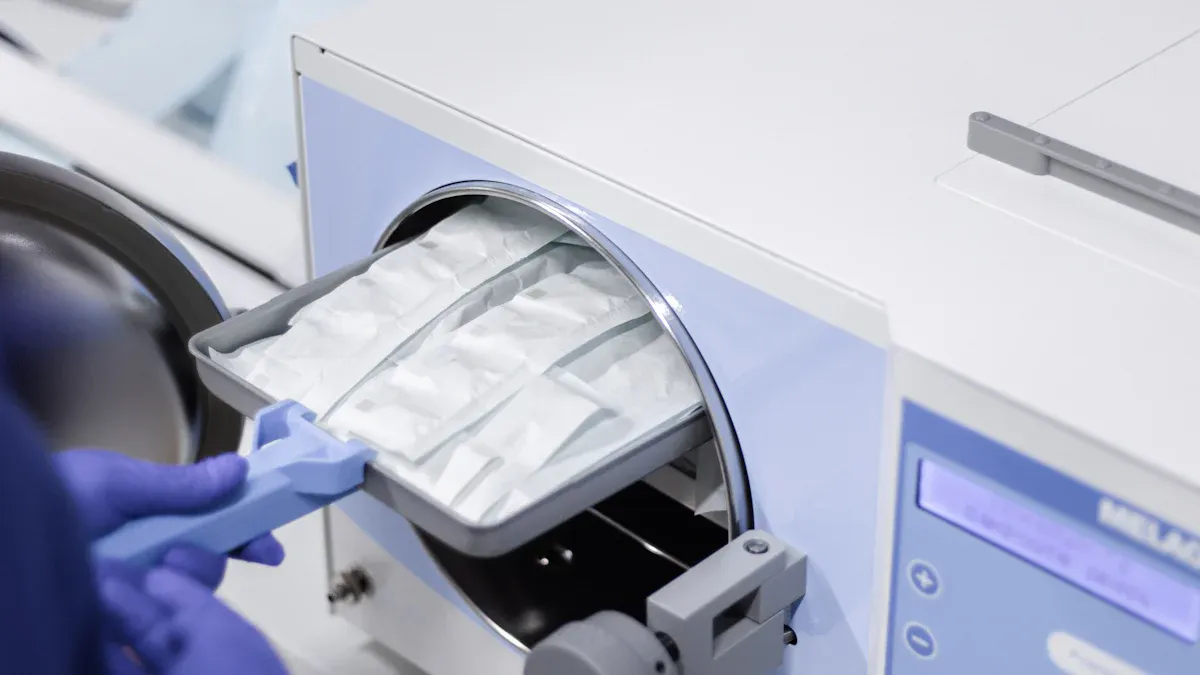The Secret to PET Tubing’s Sterilization Success

PET tubing for sterilization compatibility stands out as a versatile material in healthcare applications. Its durability ensures it can withstand demanding conditions during sterilization processes. The material resists heat and chemicals, maintaining its structural integrity. These qualities make it a dependable choice for medical device manufacturing, where reliability is paramount. PET tubing for sterilization compatibility enhances its appeal by supporting multiple sterilization methods. It aids in the production of high-quality devices that meet stringent safety standards. This tubing also offers exceptional reliability, ensuring consistent performance in critical environments.
Key Takeaways
PET tubing is strong and handles tough cleaning methods well.
It resists chemicals, so it stays safe during sterilization.
PET tubing is safe to use with human tissues directly.
It is light and works with many cleaning techniques, saving money.
PET tubing is better than PVC and silicone in strength and durability.
The Science Behind PET Tubing

Material Composition and Properties
Polyethylene terephthalate (PET) tubing is crafted from a high-performance polymer known for its exceptional strength and versatility. This material exhibits a unique combination of mechanical and thermal properties, making it ideal for demanding applications in medical device manufacturing. PET tubing demonstrates high tensile strength, ensuring it can withstand mechanical stress without deformation. Its lightweight nature further enhances its usability in intricate medical devices.
The polymer’s molecular structure contributes to its durability and resistance to wear and tear. PET tubing also offers excellent dimensional stability, maintaining its shape and size even under fluctuating temperatures. These properties make it a reliable choice for encapsulation of sensitive components, ensuring the quality and performance of medical-grade plastics used in healthcare environments.
Chemical Resistance and Sterilization Compatibility
PET tubing excels in environments where exposure to chemicals and sterilization processes is unavoidable. Its chemical resistance ensures that it remains unaffected by common sterilizing agents, such as ethylene oxide and hydrogen peroxide. This compatibility allows manufacturers to employ various sterilization methods without compromising the tubing’s structural integrity or performance.
Heat-based sterilization, such as autoclaving, is another area where PET tubing shines. Its ability to endure high temperatures without losing strength or flexibility makes it a preferred material for medical-grade plastics. Additionally, PET tubing resists degradation when exposed to radiation sterilization methods like gamma rays and electron beams. This versatility ensures reliability in medical device manufacturing, where maintaining the quality of materials is critical.
Biocompatibility and Safety in Medical Applications
PET tubing’s biocompatibility and safety are key factors in its widespread use in healthcare. The material meets stringent medical standards, including ISO 10993 and USP Class VI, which confirm its suitability for critical applications. These certifications ensure that PET tubing is safe for direct contact with human tissues and fluids, making it an excellent choice for devices like catheters and surgical instruments.
The table below highlights PET tubing’s biocompatibility and compliance with medical standards:
Evidence Description | Details |
|---|---|
Biocompatibility and Durability | PET tubing’s properties ensure safety and reliability in devices like catheters and surgical instruments. |
Compliance with Medical Standards | PET tubing meets ISO 10993 and USP Class VI standards, confirming its biocompatibility and safety. |
In addition to its biocompatibility, PET tubing offers superior strength and reliability in encapsulation of sensitive components. Its moisture resistance ensures that fluids do not compromise the tubing’s performance, further enhancing its quality in medical applications. These attributes make PET tubing a cornerstone material in medical device manufacturing, where safety and reliability are paramount.
Sterilization Methods Compatible with PET Tubing
Heat-Based Sterilization (Autoclaving)
PET tubing demonstrates exceptional compatibility with heat-based sterilization methods, particularly autoclaving. Autoclaving subjects materials to high-pressure steam at elevated temperatures, effectively eliminating microbial contaminants. PET tubing’s heat resistance and low shrink temperature make it ideal for this process. Its thermal stability ensures that the tubing retains its structural integrity and performance even after repeated sterilization cycles.
Regulatory standards, such as ISO 17665-1:2023, require materials used in medical devices to endure high-temperature sterilization without degradation. PET tubing meets these stringent requirements, confirming its reliability for sterilizable medical devices. This makes it a preferred choice for applications like drug delivery systems, including insulin pumps and wearable injectors. These devices rely on PET tubing’s ability to resist pharmaceuticals while maintaining consistent dosing, even in environments requiring sterilization.
Tip: PET heat shrink tubing is specifically engineered to withstand rigorous autoclaving processes, ensuring durability and reliability in critical medical applications.
Radiation Sterilization (Gamma and E-Beam)
Radiation sterilization methods, such as gamma and electron beam (e-beam), are widely used for medical devices due to their ability to penetrate materials and eliminate microbial contaminants. PET tubing excels under these conditions, maintaining its chemical and physical properties without significant degradation.
Studies evaluating microbial inactivation using gamma and e-beam radiation have demonstrated the effectiveness of these methods. Key findings include:
Microbial lethality tests showed no significant differences across the radiation energies tested.
Out of 280 tests, only 13% revealed notable differences between gamma and e-beam technologies.
Discoloration effects were observed in other materials, but PET tubing remained visually unaffected.
These results highlight PET tubing’s resilience and compatibility with radiation sterilization, making it a reliable choice for medical device manufacturing. Its ability to endure high-energy treatments ensures consistent performance in environments requiring stringent sterilization protocols.
Chemical Sterilization and PET Heat Shrink Tubing
Chemical sterilization methods, such as hydrogen peroxide and ethylene oxide treatments, offer an alternative to heat-based and radiation sterilization. PET tubing’s chemical resistance makes it highly compatible with these processes. A 2023 study published in the Journal of Medical Materials Research revealed that PET tubing retained over 88% of its tensile strength after 50 cycles of hydrogen peroxide sterilization. Dimensional stability tests further confirmed that PET tubing preserved its insulation properties for up to 18 months during sterilization trials.
PET heat shrink tubing plays a pivotal role in chemical sterilization applications. Its unique properties allow it to shrink uniformly when exposed to heat, encapsulating sensitive components securely. This ensures that the tubing maintains its performance and insulation properties, even after prolonged exposure to sterilizing agents.
Note: PET heat shrink tubing’s ability to combine heat resistance and low shrink temperature makes it indispensable in chemical sterilization processes, particularly for encapsulating delicate medical components.
Advantages of PET Tubing in Medical Device Manufacturing

Durability and Longevity
PET tubing offers high strength and durability, making it a reliable choice for medical device manufacturing. Specialty polymers like PET are increasingly used in advanced medical devices due to their ability to withstand mechanical stress and resist chemical exposure. These properties ensure the tubing maintains its shape and performance over time, even in demanding environments.
The demand for durable materials in minimally invasive treatments highlights PET tubing’s importance. Its elasticity and biocompatibility allow it to maintain accurate geometry, ensuring proper fit and conducting quality control during manufacturing. The following factors contribute to PET tubing’s longevity:
Resistance to wear and tear, even under repeated sterilization cycles.
Ability to endure exposure to harsh chemicals without degradation.
Consistent performance in applications requiring precise and reproducible tubing.
These attributes make PET tubing a cornerstone material in healthcare, ensuring the quality of medical devices used in critical treatments.
Cost-Effectiveness for Manufacturers
PET tubing provides a cost-effective solution for manufacturers seeking reliable materials for medical device production. Its durability reduces the need for frequent replacements, lowering long-term costs. Additionally, PET tubing’s compatibility with multiple sterilization methods simplifies manufacturing processes, saving time and resources.
The material’s lightweight nature further enhances its cost-effectiveness. It allows manufacturers to produce intricate devices without compromising structural integrity. PET tubing’s ability to maintain consistent quality across production batches ensures efficiency, reducing waste and improving overall profitability.
Moisture Resistance and Fluid Management
PET tubing excels in applications requiring moisture resistance and fluid management. Its non-porous surface prevents fluid absorption, ensuring the tubing remains intact and functional in environments with high humidity or direct fluid exposure. This property is critical for medical devices like catheters and infusion systems, where maintaining sterility and performance is essential.
The tubing’s ability to resist moisture also contributes to its durability. It prevents swelling or deformation, ensuring the device operates reliably over extended periods. PET tubing’s moisture resistance enhances its role in fluid management, making it indispensable in healthcare applications requiring precision and reliability.
Comparing PET Tubing to Other Materials
PET vs. PVC
PET tubing offers significant advantages over PVC in medical applications. PVC, while flexible and cost-effective, often contains plasticizers like phthalates, which can leach into surrounding environments. This poses safety concerns, especially in sensitive applications like catheter production and assembly. PET tubing, on the other hand, is free from such additives, ensuring greater biocompatibility and safety.
Additionally, PET tubing demonstrates superior chemical resistance compared to PVC. It withstands exposure to sterilizing agents and harsh chemicals without degradation. PVC, in contrast, may become brittle or discolored after repeated sterilization cycles. These differences make PET tubing a more reliable choice for long-term use in medical devices.
PET vs. Silicone
Silicone tubing is known for its flexibility and high-temperature resistance, making it a popular choice in certain medical applications. However, PET tubing surpasses silicone in areas like tensile strength and dimensional stability. PET tubing maintains its shape and structural integrity under mechanical stress, which is critical in applications like catheter production and assembly.
Silicone’s porous nature can lead to fluid absorption, potentially compromising device performance. PET tubing, with its non-porous surface, prevents fluid absorption and ensures consistent performance in moisture-rich environments. This makes PET tubing ideal for applications requiring precise fluid management, such as catheters and infusion systems.
PET vs. Polypropylene
Polypropylene tubing is lightweight and cost-effective, but it lacks the durability and chemical resistance of PET tubing. PET tubing excels in environments requiring repeated sterilization, as it resists degradation from heat, radiation, and chemicals. Polypropylene, however, may warp or lose strength under similar conditions.
In medical applications, PET tubing’s biocompatibility gives it an edge over polypropylene. While polypropylene is suitable for general-purpose use, PET tubing meets stringent medical standards, ensuring safety and reliability in critical devices like catheters. Its superior moisture resistance further enhances its suitability for fluid management applications.
PET tubing stands out as a superior material in medical device manufacturing due to its unique properties. Its chemical resistance and biocompatibility ensure safety and reliability in critical applications. The tubing’s compatibility with multiple sterilization methods enhances its versatility, making it a dependable choice for healthcare environments. Compared to alternatives like PVC and silicone, PET tubing offers better quality and durability. Manufacturers benefit from its cost-efficiency and consistent performance, ensuring high-quality devices that meet stringent standards. PET tubing continues to play a vital role in advancing medical device manufacturing.
FAQ
What makes PET tubing ideal for medical applications?
PET tubing offers durability, biocompatibility, and chemical resistance. It meets stringent medical standards, ensuring safety for direct contact with human tissues. Its compatibility with sterilization methods makes it reliable for critical healthcare environments.
Can PET tubing withstand repeated sterilization cycles?
Yes, PET tubing resists degradation from heat, radiation, and chemicals. It maintains its structural integrity and performance after multiple sterilization cycles, making it suitable for long-term use in medical devices.
How does PET tubing compare to PVC in terms of safety?
Unlike PVC, PET tubing contains no plasticizers like phthalates, which can leach into environments. PET tubing ensures greater biocompatibility and safety, especially in sensitive applications like catheter production.
Is PET tubing cost-effective for manufacturers?
PET tubing reduces long-term costs due to its durability and compatibility with various sterilization methods. Its lightweight nature simplifies production, ensuring efficiency and minimizing waste during manufacturing processes.
Does PET tubing resist moisture in fluid management applications?
PET tubing’s non-porous surface prevents fluid absorption, ensuring consistent performance in moisture-rich environments. This property makes it ideal for devices like catheters and infusion systems, where sterility and reliability are essential.
See Also
The Importance of Ultra-Thin PET Tubing in Healthcare Devices
Creating Multi-Layer Catheters with Medical Grade FEP Tubing
Key Uses of Ultrathin-Wall PET Tubing in Medical Equipment

